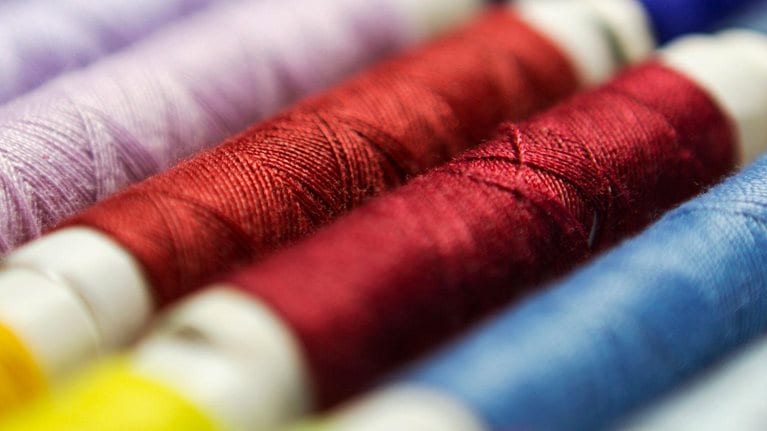A lot has been written lately about rising labor costs in China, where much of the world’s clothing is made. In Bangladesh, home to thousands of garment factories, a series of tragic industrial accidents has made consumers and the media pay closer attention to where, by whom, and under what conditions clothing is manufactured. How have these developments affected the purchasing function at apparel companies? What has—and hasn’t—changed in apparel sourcing? From where will apparel companies source their products in the future?
To find answers to these and other questions, in late 2013 we surveyed 29 chief procurement officers (CPOs) at leading apparel companies, responsible for a combined €28 billion in purchasing volume. This was our second such survey; we conducted the first in 2011. To deepen our findings, we also conducted lengthy interviews with several CPOs and hosted a roundtable for sourcing executives in March 2014. (For more on the roundtable, see sidebar, “What the sourcing industry needs now: New capabilities, more cooperation.”)
Our research shows that most apparel players expect long-term increases in labor and energy costs and are looking to move a portion of their manufacturing out of China and into some surprising new sourcing markets. We also found that Bangladesh remains at the top of the list of apparel-sourcing markets expected to grow in importance in the next few years. More apparel companies are taking a proactive approach to ensuring that suppliers, in Bangladesh and elsewhere, comply with regulations on worker safety and environmental protection.
Costs rising steadily
Three out of four survey respondents expect sourcing costs to rise in the near term. The average expected cost increase is 1.7 percent, with the largest fashion retail chains expecting a 3.5 percent increase. And unlike past cost increases, this time the trend is expected to last—even with cyclical dips in raw-material prices—due in large part to structural factors, including the steady upward trajectory of labor costs in China and rising energy costs worldwide. Almost three-fourths of sourcing executives report that they want to reduce their exposure to China (Exhibit 1).

With consumers unlikely to tolerate higher apparel prices, companies are forced to find other solutions to relieve margin pressure. On this front, two trends are emerging: some companies are seeking to reduce costs further by sourcing from largely untapped low-cost countries in Southeast Asia and sub-Saharan Africa, while others are looking for ways to boost the productivity of their current suppliers. Apparel buyers are working closely with suppliers, for example, to implement lean techniques in factories.
Compliance increasing in importance
In engaging more deeply with suppliers, apparel companies are aiming to improve not only productivity but also compliance—particularly with rules on building and fire safety. More than 150 clothing companies from 20 countries have signed the Accord on Fire and Building Safety in Bangladesh, which was initiated in Europe. Pursuant to this agreement, more than 1,700 suppliers will be inspected in the coming months. In addition, a group of North American companies formed the Alliance for Bangladesh Worker Safety. These two initiatives have brought apparel companies together to develop industry standards and ensure transparency and compliance.
In evaluating new sourcing markets and new suppliers, compliance is now a top criterion for CPOs, along with cost and capacity. With these prerequisites in mind, half of the survey respondents—down significantly from more than 80 percent in the 2011 survey—ranked Bangladesh among the three markets expected to grow in importance over the next five years. Also on the list are Vietnam, India, Myanmar, and Cambodia (Exhibit 2).

A new entrant to this list is Myanmar, a country located in the heart of Asia that has just begun reintegrating with the global community.1 It remains to be seen how Myanmar will develop. Several other industries are also interested in investing in the country, and Myanmar may decide to focus on industries other than apparel manufacturing.
Looking to new sourcing markets
Myanmar is only one of the low-cost countries piquing the interest of apparel buyers. Others include countries in sub-Saharan Africa and regions in close proximity to Western Europe and the United States.
One-fourth of the CPOs we surveyed expect sub-Saharan Africa to become a much more important sourcing market in the next five years. Swedish retailer H&M is already testing the waters by placing a small order with a supplier in Ethiopia. However, we expect that it will take some time for countries in the region to make the investments necessary to fulfill large-volume orders.
Seventy percent of the sourcing executives we surveyed said they would like to move more of their manufacturing closer to Europe, making the Mediterranean and Eastern Europe appealing options. Similarly, US-based companies, in a quest for closer-to-home suppliers, are increasingly looking to US and Latin American manufacturers. In particular, CPOs are interested in “proximity sourcing” (either nearshoring or onshoring) when it comes to high-quality products and fast-fashion items. Midmarket apparel players find proximity sourcing especially attractive, but some discount retailers are joining in as well, as Wal-Mart’s “Made in America” campaign demonstrates.
The optimal mix of sourcing markets differs for every apparel company. In our view, each company must first define its procurement requirements and then compare them with the strengths and weaknesses of various countries, weighing the trade-offs among five main criteria: cost, quality, capacity, speed, and risk. For example, Bangladesh has very low labor costs and can handle high-volume orders, but—in addition to the high-profile problems of building and fire safety—the quality of the products it manufactures is variable, suppliers there are often set up inefficiently, access to raw materials can be difficult, it has poor infrastructure and energy supply, and the political risks are significant. Turkey, on the other hand, does not offer the lowest labor costs, but it boasts different advantages: apparel factories that have high capacity and can produce high-quality goods, the ability to make speedy deliveries to European markets via rail or road, regional manufacturing clusters that make up an efficient and integrated textile industry, and comparatively low political risk.
Undeniably, apparel sourcing is becoming more challenging. CPOs, once focused primarily on cost, must now take into consideration several other important factors. Corporate social responsibility is more than a buzzword: leading apparel companies are working to improve standards throughout the value chain and adhere to sustainability strategies consistently. We firmly believe these are steps in the right direction.


